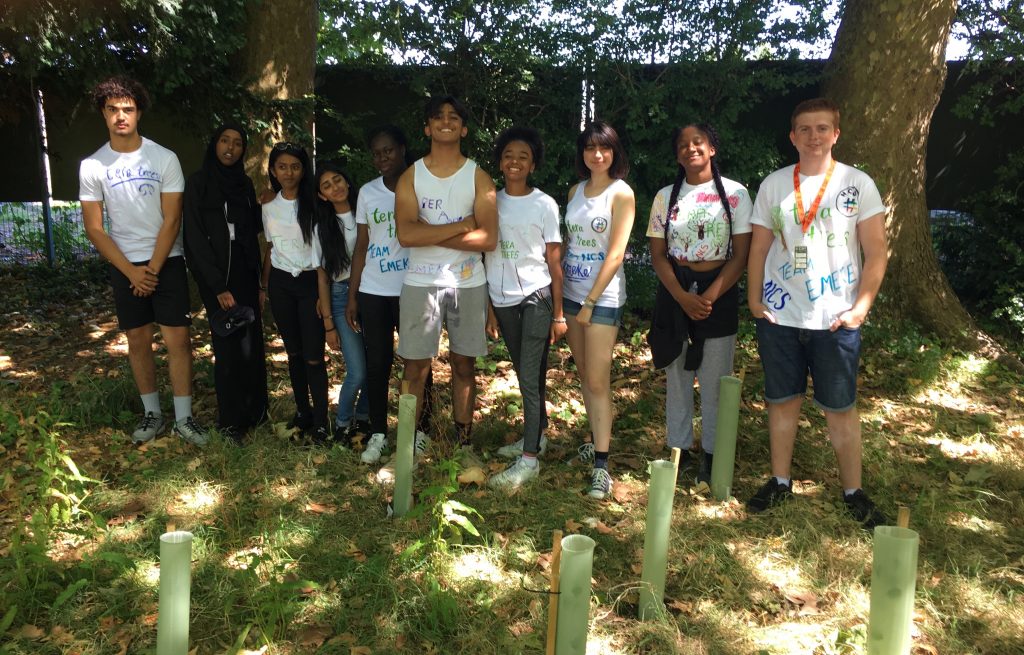Life began on this planet about 3.8 billion year ago, starting precariously as single-celled prokaryotes. It took a further billion years for photosynthesis to develop, producing oxygen as a waste product which was absorbed by the oceans. The moon was much closer then and huge tides washed the Earth. A billion years passed and more complex cells appeared in the form of eukaryotes, and about 600 million years later simple multi-cellular organisms appeared, such as red algae. With the passing of another 700 million years the first phyla of animals appeared during the Cambrian explosion, with great diversification happening in the seas.

Life began precariously from single celled organisms
This preamble leads up to the Devonian period, 350 to 420 million years ago. The Earth was arid and warm, and most likely lacked glaciers with ocean temperatures of 30 °C. In the midst of this period an interesting event occurred. The first plant with a woody stem appeared – the first tree. Wattieza grew to a height of around 8m with frond-like leaves and reproduced by spores. This was a momentous occasion for the planet as now plants could compete for light both vertically and horizontally, and convert CO2 at higher rates. The first forests developed and were buried over time, removing CO2 from the atmosphere in the form of wood. This caused cooling of the planet and altered soil chemistry, while leaf litter fed streams – it is no surprise that there was an explosion of fresh water fish at this time.
![Artists impression of Devonian Period [Eduard Riou (1838-1900)]](https://www.teratrees.com/blog/wp-content/uploads/2015/11/Devonianscene-green-300x210.jpg)
Artists impression of Devonian Period [Eduard Riou (1838-1900)]
About 200 000 years ago
Homo sapiens (Latin for “wise person”) appeared on the planet in East Africa, a species which has now been around for 0.004 % of the Earth’s history.

The arrival of humans
In September this year, Yale researchers reported in Nature that the planet has approximately 3 trillion trees, which is about half since the spread of human civilization began. This very young species has now drastically altered the planet, and is decreasing tree populations by 15 billion per year via deforestation, forestry and land-use practices. Not only in our ‘wisdom’ are we making space for ourselves, but we are decreasing the ability for the planet to process carbon dioxide, produce oxygen and control warming, as seen during the cooling of the Devonian period. This is also ignoring the ecosystems and habitats that trees and forests provide, which is significant.

We are losing 10 billion trees per year (net)
This loss is very worrying, but in that Nature article is also a green shoot of hope. Humans are planting approximately 5 billion trees per year, so although a net loss of 10 billion trees, it shows that there is potential to plant trees in large numbers. This is something entirely capable by our species, and there is no reason why we should not be able to produce a surplus each year. While protection of forests is vital and areas such as the Amazon are an international concern, on the individual level in our green spaces and spare land, many trees can still be planted. It is not argued here that planting trees is the solution to our problems, but rather a solution, one of many that we need to enact.
Life has come a long way from this planet being a molten ball of rock 4.5 billion years ago. Ironically, it is only our species on the planet who can comprehend this. At the current rate of tree loss there will not be a single tree in 300 years. Last year we lost acres of trees equivalent to the size of two Portugals. It is up to us to live up to our species name as ‘wise person’ and get on with the job that lies before us.
This article appeared in SALT magazine
.











![Artists impression of Devonian Period [Eduard Riou (1838-1900)]](https://www.teratrees.com/blog/wp-content/uploads/2015/11/Devonianscene-green-300x210.jpg)













